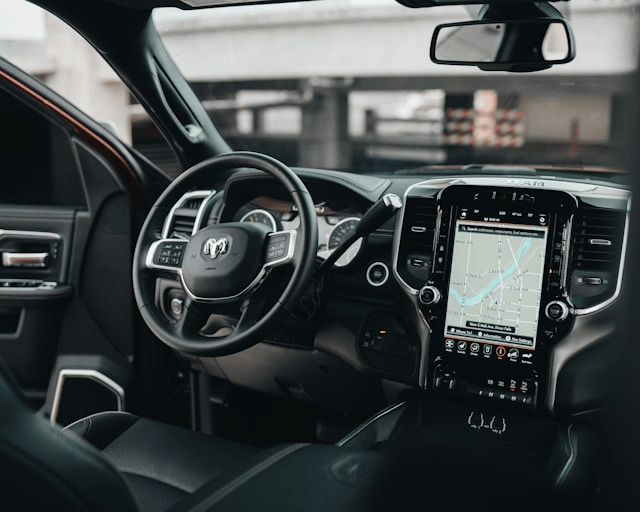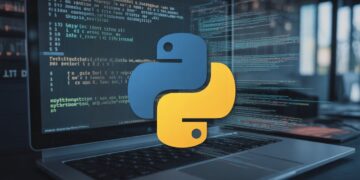The idea of cars that drive themselves used to belong to the realm of science fiction. Today, thanks to advancements in artificial intelligence, autonomous vehicles are not only real but already on the road. From Tesla’s Autopilot to Waymo’s fully driverless taxis, the impact of AI in self-driving cars is transforming how we think about mobility, safety, and the future of transportation.
But what exactly does artificial intelligence do in these vehicles? How do driverless cars see, think, and make decisions? This article breaks down the key ways AI powers autonomous vehicles from perception and navigation to real-time decision-making and what it means for the road ahead.
The Role of AI in Autonomous Vehicles
Self-driving cars rely on a combination of hardware (sensors, cameras, processors) and software (AI algorithms, machine learning models) to operate. Without artificial intelligence, a vehicle cannot truly drive itself. AI systems allow these vehicles to interpret their surroundings, make decisions, and navigate complex environments all without human input.
To better understand how this works, it’s helpful to look at the SAE levels of automation:
-
Level 0: No automation. The driver controls everything.
-
Level 1-2: Driver assistance features like cruise control or lane-keeping.
-
Level 3: Conditional automation; the car can handle most tasks but may require human intervention.
-
Level 4: High automation; the car can drive itself in most scenarios.
-
Level 5: Full automation; no driver needed at all.
Current vehicles on the market mostly operate at Level 2, with experimental models reaching Level 4 in controlled environments. At every level above 1, AI plays a bigger and more critical role.
Core AI Technologies in Self-Driving Cars
Computer Vision
Computer vision is a subset of AI that enables cars to “see” the world around them. Cameras mounted around the vehicle capture video in real time. AI algorithms then process this footage to recognize lanes, road signs, traffic lights, pedestrians, and other vehicles. This visual data helps the car understand what’s happening in its environment.
Sensor Fusion
While cameras provide visual data, they aren’t sufficient on their own. That’s where sensor fusion comes in. Self-driving cars use radar, LiDAR (Light Detection and Ranging), ultrasonic sensors, and GPS. AI combines these inputs into a unified, detailed understanding of the car’s surroundings. For example, while a camera can identify a cyclist, radar can detect their distance and speed.
Sensor fusion is crucial for ensuring safety, especially in challenging conditions like fog, darkness, or heavy traffic.
Machine Learning
Machine learning in driverless cars allows systems to improve over time. By analyzing massive datasets such as recorded driving experiences or traffic scenarios self-driving algorithms can learn how to recognize patterns, make predictions, and optimize their actions.
Supervised learning helps in labeling road features (e.g., distinguishing a pedestrian from a mailbox), while reinforcement learning allows cars to “learn by doing,” improving performance through trial and error in simulated or real-world environments.
Deep Learning
A more advanced branch of machine learning, deep learning uses neural networks to handle complex tasks like real-time object detection or behavior prediction. For example, a deep learning model can analyze a pedestrian’s body language to predict if they’re about to cross the street.
Deep learning also plays a major role in voice commands, driver monitoring, and mapping.
How AI Makes Driving Decisions
AI doesn’t just process data it uses that data to make split-second decisions. Once the vehicle perceives its environment, it must decide what to do next. This includes:
Path Planning and Navigation
Using AI, self-driving cars generate optimal driving paths based on their goals (like reaching a destination) and current conditions (like roadblocks or traffic). This process includes route planning, lane selection, speed adjustment, and intersection handling.
Obstacle Avoidance and Emergency Maneuvers
If another driver swerves into the lane or a child runs into the road, the car must respond instantly. AI assesses the safest available action brake, swerve, or stop and executes it, often faster than a human driver could.
Predicting Human Behavior
Artificial intelligence in autonomous vehicles is also used to anticipate how other drivers, cyclists, or pedestrians will behave. This helps prevent accidents by preparing the vehicle for sudden, unpredictable actions.
Real-World Applications of AI in Self-Driving Cars
Several companies are actively developing and testing AI-powered autonomous vehicles:
-
Tesla uses a camera-based system with AI for its Autopilot and Full Self-Driving (FSD) features, enabling highway lane changes, parking, and limited city navigation.
-
Waymo (a subsidiary of Alphabet) uses a combination of LiDAR, radar, and deep learning to operate fully autonomous taxis in select U.S. cities.
-
Cruise (owned by GM) runs electric autonomous vehicles in San Francisco, focusing on urban driving challenges.
-
NVIDIA supplies AI computing platforms that process massive amounts of sensor data in real time, powering various self-driving systems.
These companies demonstrate how AI in self-driving cars is already being deployed, even if full autonomy isn’t yet widespread.
Challenges and Limitations
Despite rapid advancements, fully autonomous driving is not without its challenges.
Weather and Environmental Conditions
Rain, snow, and fog can obscure sensors and create uncertainty. AI models must be trained to perform well in all conditions something human drivers do naturally but machines still struggle with.
Human Behavior
People are unpredictable. AI must be able to interpret the intent of nearby drivers and pedestrians, even when they don’t follow traffic rules.
Ethical and Legal Considerations
AI may face situations where every option carries risk. Who is responsible if an autonomous car causes an accident the manufacturer, the programmer, or the passenger? These are questions society is still answering.
The Future of AI in Autonomous Vehicles
The road ahead for AI-powered cars looks promising. Here are a few trends shaping the future:
-
Edge computing allows for faster processing directly in the vehicle, reducing the need for cloud-based communication.
-
Smarter neural networks are improving real-time performance and decision-making.
-
5G networks may support vehicle-to-vehicle (V2V) and vehicle-to-infrastructure (V2I) communication.
-
Better regulatory frameworks are being developed to ensure safety, privacy, and accountability.
Ultimately, the goal is to use AI to make driving safer, reduce traffic congestion, and give people more freedom especially those unable to drive.
Conclusion
AI in self-driving cars is no longer just an experiment it’s actively reshaping how vehicles operate and how we move through the world. Through technologies like computer vision, sensor fusion, and deep learning, autonomous vehicles are becoming smarter, safer, and more efficient.









